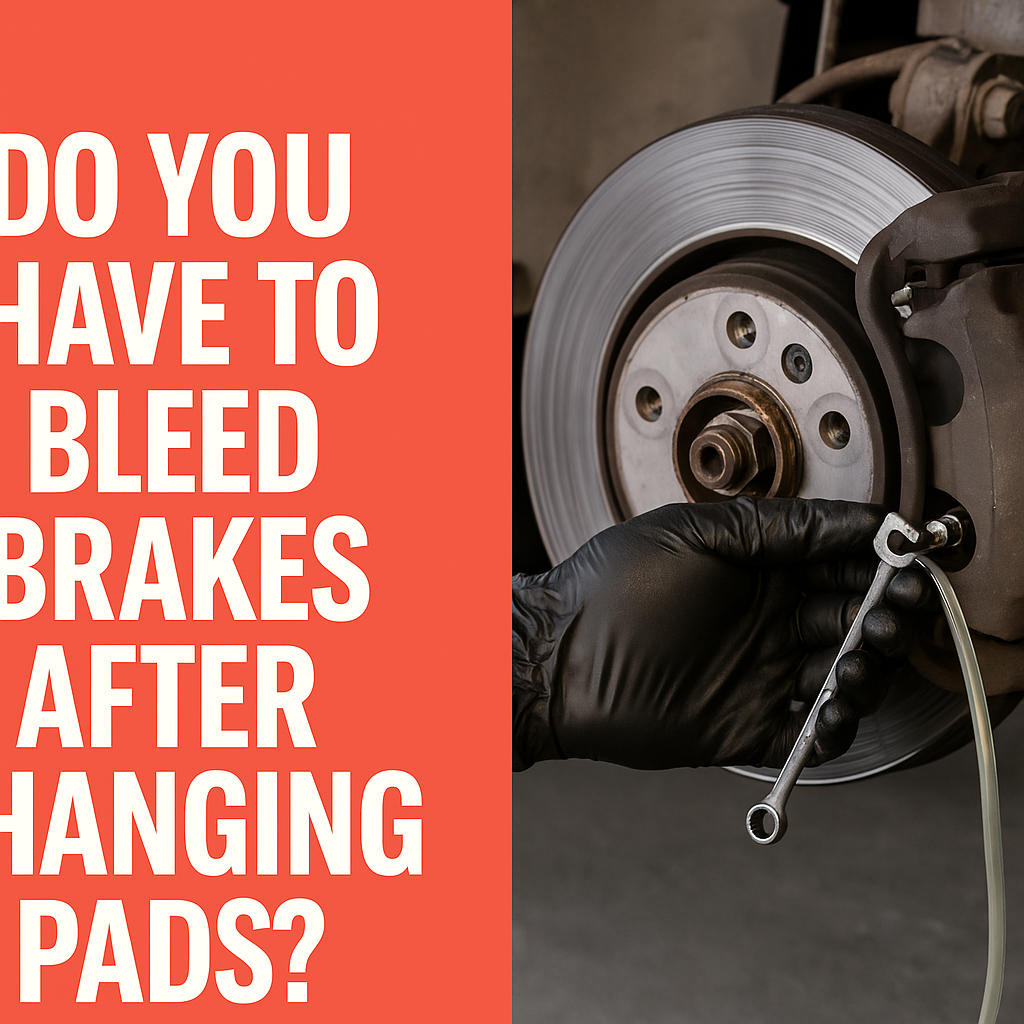Replacing brake pads is a common maintenance task for DIYers and professional mechanics alike. But a common question arises: Do you have to bleed the brakes after changing the pads? The answer depends on a few key factors. Let’s dive deep into the mechanics of brake systems, when bleeding is necessary, and how to ensure safe, responsive braking.
1. What Happens During a Brake Pad Replacement?
When you replace brake pads, you remove the worn pads and install new ones. This process involves:
- Removing the caliper assembly or pivoting it out of the way.
- Retracting the caliper piston to accommodate the thicker new pads.
- Installing the new pads and reassembling the system.
During this process, you usually don’t open the brake hydraulic system. The caliper piston is pushed back into its bore, but the system remains sealed unless you:
- Loosen a bleeder valve to make piston compression easier.
- Remove a brake line or caliper.
- Replace brake fluid or perform a flush.
2. When Don’t You Need to Bleed the Brakes?
🔸 Pads-Only Replacement:
If you’re simply changing the brake pads and:
- You don’t open the brake lines or bleeder valves.
- The master cylinder reservoir remains sealed.
- The brake fluid level remains adequate.
Then bleeding isn’t usually necessary.
🔸 Firm Brake Pedal:
After pad replacement, if your brake pedal feels firm and responsive, it indicates the hydraulic system is intact and free of air.
🔸 No Fluid Loss:
If you didn’t lose brake fluid or notice contamination, air likely didn’t enter the system.
3. When Do You Need to Bleed the Brakes?
🔧 Hydraulic System Opened:
If you disconnected brake lines, removed calipers, or opened the bleeder valves, air may have entered the system, and bleeding is essential.
🔧 Fluid Loss or Contamination:
If brake fluid leaked out during pad changes or appears dirty, bleeding is necessary to remove air and contaminants.
🔧 Soft or Spongy Brake Pedal:
If the brake pedal feels mushy or sinks to the floor after pad replacement, it’s a sign of trapped air or low fluid. Bleeding is required to restore firm, responsive braking.
🔧 Performing a Fluid Flush:
If you’re replacing or flushing brake fluid (recommended every 2-3 years), bleeding removes old fluid and ensures a clean, air-free system.
4. How Can Air Enter the System During Pad Changes?
While changing pads usually doesn’t introduce air, a few mistakes can:
- Pushing the piston back too quickly can force fluid and air into the master cylinder, especially if the reservoir cap is removed or low on fluid.
- Low brake fluid level in the reservoir can allow air to enter the system when the piston is compressed.
- Damaged seals or loose connections may let air sneak into the hydraulic lines.
5. How to Test If Bleeding is Needed
Here’s a simple test after pad replacement:
- Pump the brake pedal several times to seat the pads and pistons.
- Observe the pedal feel:
- Firm pedal? Likely no need to bleed.
- Soft, spongy, or sinking pedal? Air may be present. Bleeding is necessary.
- Check for leaks around the calipers, lines, and master cylinder.
6. How to Bleed the Brakes (If Needed)
Tools You’ll Need:
- Brake fluid (check your owner’s manual for the correct type)
- Wrench for bleeder valves
- Clear tubing and a catch bottle
- A friend to pump the pedal (or a one-person bleeding kit)
Steps:
- Locate the bleeder valves (usually on calipers).
- Top off the reservoir with fresh fluid.
- Attach clear tubing to the bleeder valve and place the other end in the catch bottle.
- Have a helper pump the brake pedal several times and hold it down.
- Open the bleeder valve slightly; fluid and air bubbles will flow into the bottle.
- Close the valve and release the pedal.
- Repeat until no air bubbles appear and fresh fluid flows.
- Start with the caliper farthest from the master cylinder (usually rear passenger), then work closer.
7. Why Proper Brake Bleeding Matters
A properly bled brake system ensures:
✅ Responsive and consistent brake pedal feel
✅ Reduced stopping distance
✅ Prevention of brake fade and overheating
✅ Improved safety and vehicle control
Ignoring air in the system can lead to:
❌ Spongy or sinking brake pedal
❌ Delayed braking response
❌ Increased stopping distance
❌ Dangerous brake failure under stress
8. Tips to Prevent Air Entry During Pad Changes
- Don’t remove the brake reservoir cap while compressing calipers unless necessary.
- Compress caliper pistons slowly to avoid forcing fluid back into the system.
- Monitor fluid levels in the reservoir.
- Use clean, high-quality brake fluid and check for leaks.
9. Bonus: When Should You Always Bleed Brakes?
Always bleed your brakes when:
- Replacing calipers, brake lines, or master cylinder.
- Performing a complete brake fluid flush.
- Experiencing a soft brake pedal.
- Observing contaminated or old brake fluid.
Conclusion: Key Takeaways
🔸 Do you always have to bleed brakes after changing pads?
- No, if you’re just swapping pads and haven’t opened the hydraulic system.
🔸 When should you bleed brakes?
- If the system was opened, you lost fluid, the pedal feels soft, or you’re flushing old fluid.
🔸 Best practice:
- Always test the brake pedal after pad replacement. If it feels soft or spongy, bleed the brakes to restore safety and performance.

